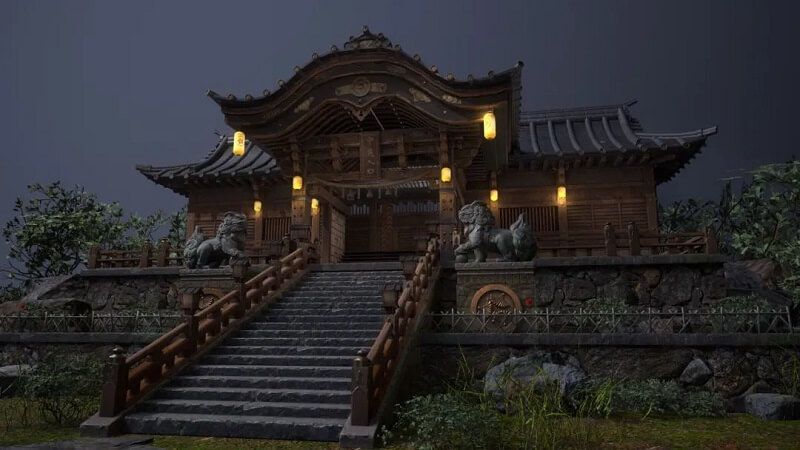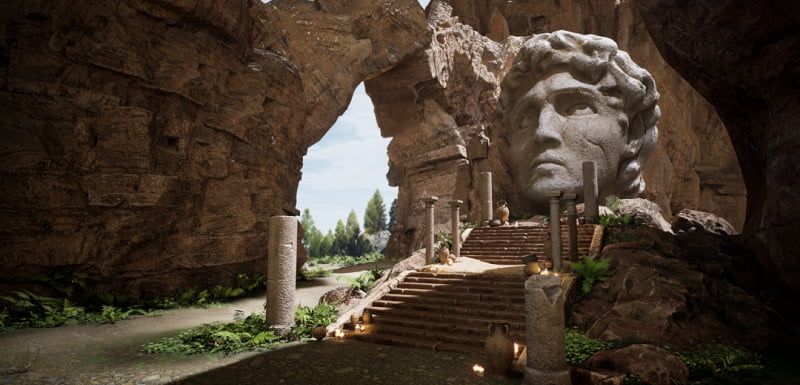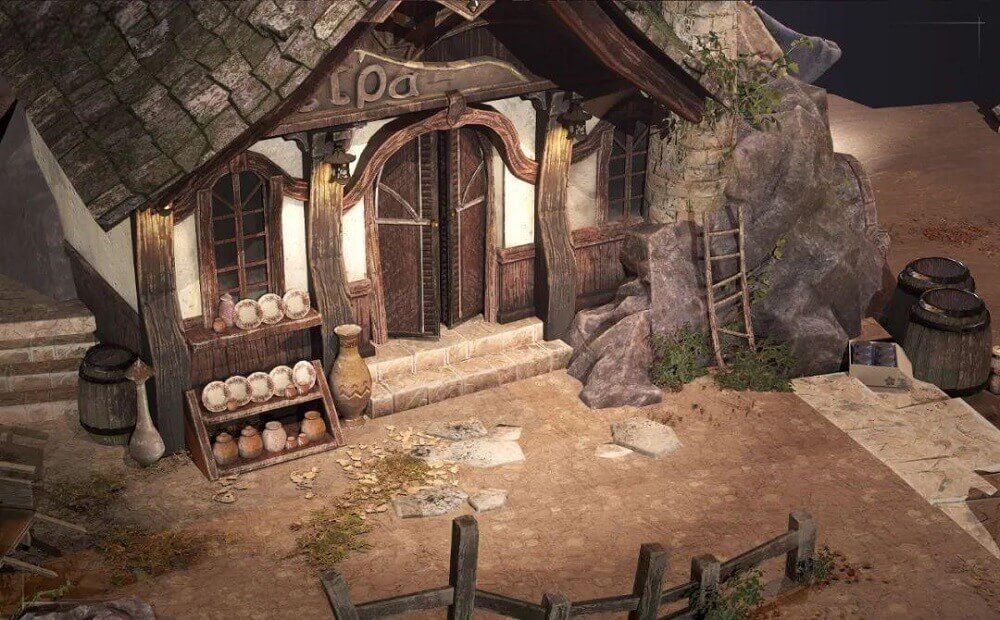Get Started on Game Modeling with 3ds Max Modeling Tips

The reason why 3D is called "3D" is because it takes a 2D profile of an object and extrudes it along a certain path, forming complex 3D objects. Different shapes can be applied to different segments along the same path. This transformation path is called loft modeling. Today, Fox Renderfarm, as a leading cloud rendering service provider and render farm in the industry, will introduce the basic modeling techniques 3ds Max loft modeling to you.
Lattice Modeling
Maya's powerful lattice modeling tool is incredibly powerful but often overlooked by beginners. The lattice allows you to efficiently make overall changes to high-resolution models, avoiding the tedious task of manipulating hundreds or thousands of edges and vertices individually.
Despite being a powerful tool, lattice modeling is often missed by beginners, partly because it is located under the Animation tab rather than the Polygon Modeling tab in Maya's interface.

Image from Internet, copyright of the original author
Soft Selection
Are you tired of moving each vertex individually?
Just like the lattice modeling, the soft selection feature allows you to efficiently modify a region of a model by setting a controllable falloff radius for each vertex, edge, or face. In other words, when soft selection is enabled, selecting a vertex and translating it in space will also affect the surrounding vertices (the degree of influence is determined by the falloff radius you have set).
Soft selection is particularly useful for modeling organic objects such as skeletons, muscles, and faces. It helps you achieve smoother transitions and deformations between different parts of the model.

Image from Internet, copyright of the original author
The Duplicate Special
Have you ever been frustrated while modeling objects with regularly spaced elements, like fences? The Duplicate Special feature allows you to create multiple copies of an object and translate, rotate, or scale each instance individually.
For example, let's say you need to model a Greek pillar with a series of regularly spaced relief units encircling its surface. In this case, after creating a single relief unit, you can find the central axis of the cylinder and use the duplicate special feature to evenly distribute and replicate each relief unit, making it easy to complete the modeling process.

Image from Internet, copyright of the original author
The Relax Brush
Beginners often tend to end the modeling of organic models with a "blocky" appearance. Although Maya does not have a complete set of sculpting tools, it does have some basic sculpting brushes, with the most useful one being the Relax Brush tool.
The Relax brush will average out the spacing between the vertices you brush over, resulting in a smoother surface without compromising the model's overall shape. If you are modeling a facial model, for example, you can use the Relax brush to make the blocky face appear more like a smooth skin surface.
Find mesh tool under the polygons menu, then sculpt geometry tool, click on the little square behind this option, and find sculpt parameter under properties, locate relax brush, and then go back to the 3D view and brush the vertices you want to smooth.
Alternatively, you can select the object you are currently modeling, hold down the right mouse button until a menu appears, and then choose Paint -> Sculpt. In the Sculpt Parameters, select the Relax Brush. You can also modify the brush radius and strength in the brush options tab to control the brush effect.

Image from Internet, copyright of the original author
Selection Sets
Have you ever had this experience: After spending a long time carefully selecting complex faces, edges, and vertices, and performing a series of operations, you unselect them to start working on something else. Then you realize that you need to make further adjustments to the large area you originally selected, but you have already canceled your previous selection. Now you have to go through the frustration of manually clicking and selecting points, edges, and faces again. Actually, this can be avoided. Maya allows you to save selection sets so that you can quickly and easily activate them later on.
If you find yourself repeatedly selecting the same points, edges, or faces, or if you have just spent a lot of time selecting a large area and suspect that you may need to select that area again in the future, use the Command Selection Sets to save it.
Select the desired points, edges, or faces, then go to Create -> Quick Select Sets. Name the set and click "OK." (If you want to find it on the toolbar later, click "Add to Shelf"). To quickly select this area in the future, simply go to Edit -> Quick Select Sets and locate your named selection set in the list.
Interact with Others More
Many beginners often overlook this step and rely solely on hard work. While professionals in the workplace can easily communicate with colleagues in the industry, it can be more challenging for beginners.
Beginners can exchange experiences with classmates who are learning together, or engage with unfamiliar peers on social platforms and other forums. Regardless of the approach, it is always beneficial to look at other people's work. Hopefully, with the guidance of these tips, everyone can achieve great success.
If you have problems with slow 3ds Max rendering on your own computer, you can use a 3ds Max render farm that offer fast cloud rendering service to speed up your 3ds Max rendering and meet your project's delivery date.
Source: aliyun
Recommended reading
Top 9 Best And Free Blender Render Farms of 2025
2024-12-30
Revealing the Techniques Behind the Production of Jibaro "Love, Death & Robots", Which Took Two Years to Draw the Storyboard
2025-02-10
Top 10 Free And Best Cloud Rendering Services in 2025
2025-03-03
Top 8 After Effects Render Farm Recommended of 2025
2025-02-10
Top 5 Best and Free 3d Rendering Software 2025
2025-02-10
Shocked! The Secret Behind Using 3D to Make 2D Animation was Revealed!
2025-02-10
How to Render High-quality Images in Blender
2024-12-04
Easy Cel Shading Tutorial for Cartoon in Blender Within 2 Minutes
2025-02-10
Partners
Previous: Top 5 V-Ray Render Farms in 2025
Next: Is There Any Way to Get Free Render Coupons?
Interested






